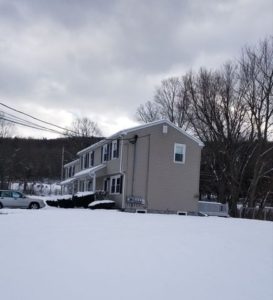Part 2 of a 10-part Series:
The Origins of Anti-Democratic Sentiment in America
“The property which every man has in his own labour, as it is the original foundation of all other property, so it is the most sacred and inviolable.”

“The property which every man has in his own labour, as it is the original foundation of all other property, so it is the most sacred and inviolable.”

Sometimes, when you don’t see yourself in the world,
you start to think that you don’t exist.
DeRay McKesson inOn the Other Side Of Freedom
Being a relative newcomer to the Fargo-Moorhead area, I often pick up a local glossy promotion piece that one finds for free at grocery stores or the library. I know these things are often no more than Chamber of Commerce propaganda touting all the great places to live and things to do (so long as you have money). They are filled with photos of perfect homes, happy people, luxury goods and scrumptious food (OK, I will confess a certain addiction to food porn). One sure way to know the visual representations in these things are pie-in-the-sky is that the photos almost invariably portray sunny days with green trees and blooming gardens, rather than the dreary, gray, ice-and-snow-buried days that are more typical here for at least five months out of the year.
Where We Live: Illusion
Where We Live: Reality
However, these publications can be helpful in learning about the community in general and local businesses in particular, so long as one remains aware of their overly idealized portrayal of reality. A recent issue of one of these things featured 100 things to do, eat and experience in Fargo. One of these sub-articles was about a travel agency, and four of the things on the “list of 100” were actually other places to visit in either North Dakota, Minnesota, and even as far away as Bozeman, Montana. So, in order to come up with 100 things to do, people have to travel out of town at least once in a while. One good feature of this issue was a section that featured local non-profits and ways to give back to the community.
However, the most interesting section was interviews with locals who described their “perfect day” in various neighborhoods. These individuals were all white. Six of them were dual-earner heterosexual couples. There was one gentleman who was presented as a single person, but there were allusions to “family friendly” activities, which suggested the fellow might either be gay or a single father who had shared custody. There was also one single woman (who lived in a less-desirable neighborhood).
In 2018, Fargo has an (estimated) population of 124,844, which is an increase of 18.2% from the 2010 census. This compares to an overall increase in U.S. population of 5.96%. In spite of brutal winters with below-zero average temperatures, Fargo is growing more than three times faster than the country as a whole. Fargo is also 86.2% White, which is higher than the national average of 72.4%. So, the fact that everyone who works for this publication (they have photographs of the staff on one of the earlier pages) and all the featured individuals therein are White does not necessarily suggest racism or discriminatory animus. The median household income in Fargo is $50,561, which is less than the national average (2017) of $61,372.
Who We See: Illusion
Who We Are: Reality
Taking a closer look at the folks who told us about their “perfect day,” we find:
Heterosexual couple living downtown (a more desirable and higher-rent area), age approximately 30-40. She is a social media manager and he is a manager at Microsoft.
The apparently single gentleman, approximate age 50-55, who lives on the North side of town, enjoys golfing and dining at a restaurant that caters to golfers. He is a business development manager for a local company. He also enjoys cooking at home and the Happy Harry’s Ribfest which takes place in June (something I like to do as well–this guy may be a fellow foodie).
Heterosexual couple, approximate age 30-40, with a pre-teen boy and a middle-school-age girl who live on the South side of town. She is the owner of a local small business and he is Director of GIS services at a data services company.
Single woman, approximate age middle 20s, lives in one of the commercial corridors. She works as an account manager.
Heterosexual couple, approximate age 50-55, lives in a desirable neighborhood and apparently enjoy the finer things in life. He is a land developer and she is President and CEO of a local non-profit. One gets the distinct impression that their household income is higher than the Fargo average, and probably higher than the national average as well.
Heterosexual couple, approximate age middle twenties or possibly early thirties. Their photo shows them digging into a yummy-looking plate of chicken wings (already warned you about the food porn). They live in West Fargo, and seem to be the closest thing to working class that we see anywhere. He is a marketing technology specialist and she is a kitchen manager at a local restaurant.
Heterosexual couple, approximate age middle thirties to early 40s. They live in an area which is a mix of middle and upper-middle class. They appear to have sufficient discretionary (but not extravagant) income. He is a technical architect and she is an HR specialist. They apparently have no children.
Heterosexual couple, approximate age mid-50s to mid-60s. They live in Moorhead, MN, a smaller town in MN directly across the Red River from Fargo. He is the owner of a local business and she is a Deacon at one of the (many) Lutheran churches in the area. If this couple has children, they are likely adults by now. Moorhead contains a somewhat older population—one who likely remembers the days of stable, decent-paying, middle-class jobs, as Minnesota is more worker and union-friendly than North Dakota. People in Moorhead like schoolteachers and even retired people often have small second homes at “the lakes” East of here, although these people are not what most of us would consider wealthy.
What is common to all of these individuals is that they have stable employment (each of them has only one job). Because most of them describe themselves as managers or business owners, it can be inferred that these individuals possess a college degree. In this respect, Fargo has a higher percentage of persons with college degrees (38.8%) than the national average (which is somewhere between 33 and 35%, depending on where and how these numbers are figured). This employment also allows them to have regular time off and sufficient income to participate in activities above and beyond basic survival. Ironically (but not surprisingly), no one’s “perfect day” included work.
Because our church does a lot of local “mission” work with homeless shelters and food pantries, I tend to see a lot of people that one never sees in these publications. Obviously, since the publication’s primary purpose is advertising, it is focused on an audience with discretionary income, and so one would not expect to see the lines of persons who visit the pantries and shelters. Rather, what is missing is any representation of the more typical working residents. These are the people who come in to have their taxes done (so they are working and have some money), usually with multiple, fragmented jobs (two or more W-2s per taxpayer).
Yet, there is a fine line between the invisible desperate and the precariatized many. These are the folks who constantly juggle work schedules and day care as well as cash flow. Unlike the couples in the publication, who are able to enjoy weekends as a family, these families rarely see a day where all of them can be not working (or going to school) at the same time. If these folks have extra money, they likely don’t have extra time, and vice-versa. A “perfect” day for them might be just to sleep in and have a good meal together with someone (anyone) in their family. They are also more diverse racially, ethnically, and age-wise than the folks we see in the glamorized glossies.
A visitor who picks up this publication (or any similar such publications that are available in most metropolitan areas) would have the impression that residents in the Fargo-Moorhead area have well-paying stable jobs that allow them sufficient predictability, leisure time and resources to actually enjoy life (even life at minus 40 degrees). Some may argue that this is harmless fluff, something like advertising “puffery” that falls short of actual deception because no one takes it literally.
But what does it do to the psyche and self-esteem of the (much more numerous) working folks whose lives are not quite so picture-perfect? We can come to believe that we are the exceptions and not the rule—the “norm” that we constantly see portrayed in front of us. Because our lives are hidden, so is our precarity. The fact that work does not really “work” for many of us remains unseen, unacknowledged, and unchallenged.